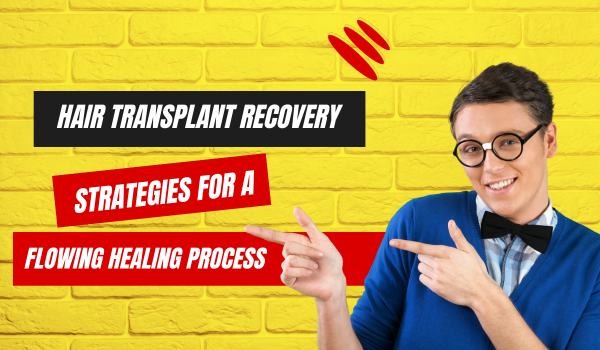Hair Transplant Recovery: Strategies for a Flowing Healing Process
Blog post description.
HAIR TRANSPLANT
Varun Mishra
10/31/20232 min read


The confidence and self-esteem of an individual can be greatly affected by hair loss. Fortunately, hair transplant procedures are getting more and more common and successful due to advancements in medical technology. Even though deciding to have a hair transplant can be a life-changing decision, the healing process is an important stage that needs care and attention. A successful outcome and a seamless healing process can be greatly enhanced by being aware of the important components of hair transplant recovery and by adhering to certain guidelines.
Understanding the Process of Recovery
After a hair transplant, recovery is crucial to achieving the best possible outcomes and reducing risks. Individual factors, such as the type of procedure, the extent of the transplant, and personal health conditions, can affect how quickly or slowly a patient heals. The newly transplanted hair follicles typically need a few weeks to establish themselves in the scalp following the procedure.
Tips for a Smooth Healing Process
1. Follow Post-Operative Instructions
Adhering strictly to the post-operative instructions provided by the surgeon is crucial. These instructions often include guidelines on how to care for the scalp, medications to take, and activities to avoid during the recovery period.
2. Avoid Touching or Scratching the Scalp
It's essential to refrain from touching or scratching the scalp, as this can disrupt the grafts and lead to potential infections. Patience and gentle care are essential during the recovery phase.
3. Maintain a Healthy Diet
Eating a nutritious diet rich in vitamins, minerals, and proteins can promote faster healing and support hair growth. Incorporate foods that are rich in antioxidants and promote collagen production to aid in the healing process.
4. Protect the Scalp from Sun Exposure
Exposing the scalp to direct sunlight can be harmful during the initial phase of recovery. Wearing a hat or using sunscreen can protect the scalp from harmful UV rays and promote better healing.
5. Avoid Strenuous Activities
Engaging in strenuous activities or exercises that can increase blood pressure and cause sweating should be avoided during the initial weeks of recovery. This precaution can prevent any undue stress on the scalp and facilitate better healing.
6. Be Patient
Patience is key during the recovery phase. It's essential to understand that the full results of a hair transplant can take several months to become apparent. Trust the process and follow the guidance provided by the medical professionals.
7. Regular Follow-Up Visits
Schedule and attend regular follow-up visits with the surgeon to monitor the progress of the healing process. Address any concerns or queries during these visits to ensure that the recovery is on track.
Conclusion
Hair transplant recovery is a crucial phase that demands careful attention and adherence to specific guidelines. By following the post-operative instructions, maintaining a healthy lifestyle, and being patient, individuals can facilitate a smooth healing process and achieve the desired results. Consulting with a qualified and experienced surgeon is essential to receive comprehensive guidance and support throughout the recovery journey. With the right care and patience, a successful hair transplant can lead to a restored sense of confidence and well-being for individuals struggling with hair loss.
Dermacore
3/285, Vivek Khand, Near Neelkanth Sweets, Gomti Nagar, Lucknow, 226010-U.P.
☏ 6386858427, 7607999766
✉ support@dermacore.in
